It is essential to visit your dentist on a regular basis to maintain your oral health. Your regular dental exam and cleaning will take about 30 minutes in which your teeth will be an exam, clean and polish. The exam will check for any dental cavities and inspect your gum for a sign of gingivitis or periodontal disease. The dental cleaning involves a cavitron which is used to remove any plaques and tartar buildup around your teeth. The polish will smooth your teeth surface to prevent bacteria buildup.
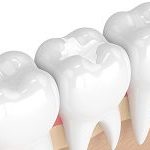 Sealants
SealantsTooth surface tends to have many grooves which make it difficult to clean by brushing. The sealant is a gel material that is hardened when it is exposed to a UV curling light. Sealant provides a protective layer on the tooth surface. The sealant is often placed on erupting permanent teeth in children and it will protect these permanent teeth as a child is learning on how to take care of his or her teeth.
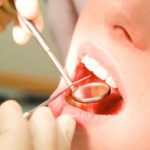 Fluoride
Fluoride Tooth decay can be reduced with the application of fluoride. A fluoride treatment is done in a dentist office. A fluoride gel is placed on the teeth and the patient is recommending not to eat or drink for 30-45 minutes to allow the fluoride gel to absorb. Depending on the patient oral health, fluoride treatment may be required every 6 or 12 months.
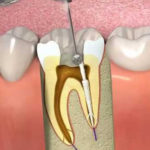 Root Canal Therapy
Root Canal Therapy A broken or decay tooth will have an infection if it is not treated immediately. The bacteria of the decay tooth will infect the nerve inside the tooth and cause infection in the area. The procedure called root canal therapy is required. This procedure removes the infected nerves and places a filling inside the tooth to prevent infection. Since the nerves are removed, the tooth is dead and it is not as strong as a regular tooth. It is recommended to place a crown on a root canal tooth to keep it strong.
 Extractions
Extractions Extraction is a process of tooth removal. Extraction is necessary in case of the baby tooth, broken tooth, failed endodontic tooth and wisdom tooth. It is recommended to remove a baby tooth when a permanent tooth has erupted or a baby tooth has too much decay to be saved. A broken tooth needs to be removed because it could lead to injection.
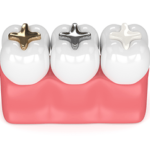 Composite Filling
Composite Filling When you have a chipped tooth or tooth decay, a composite filling or tooth colored filling is necessary to restore the missing tooth structure. New composite material contains nanohydrid particles that provide good durability and resistance to fracture from the stress of chewing. The composite filling is more expensive than amalgam filling (silver filling) because it provides the best esthetic in the mouth. Also, there is no metal the component in composite filling so there is no chance of metal allergic reaction.
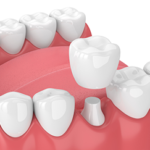 Crown
Crown A crown is also known as a “cap” and it is placed over a tooth to restore its size, shape, strength, and function of a broken tooth. A crown is cemented permanently on a tooth and you take care of it like a normal tooth with flossing and brushing. A crown is necessary when a large filling is compromised and does not provide adequate support for a tooth.
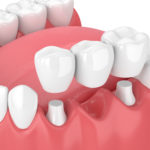
When you have one or more missing teeth, you will see the difference in chewing your food and pronouncing words when you are speaking. In order to restore this condition, you will need a bridge that replaces the missing teeth with artificial teeth. A bridge attaches to the surrounding teeth for support. Also, a bridge can be placed on implants. The advantage of a bridge is to restore your smile, prevent the adjacent teeth from drifting, and the ability to chew and speak properly.
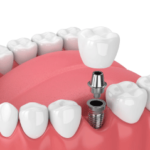
Implants restoration is referring to an implant crown that is placed on top of the implant. The implant provides the root of a tooth in a missing space. Once the implant is stabilized, an abutment and an implant crown are placed on top. This will restore the missing space with a proper structure so that one can chew the food and smile again.
 Bone Graft
Bone GraftWhen a tooth is removed, the bone around the area will change and create a bone defect. In order to prevent this occurrence, a bone graft material is placed into the socket of the removed tooth to prevent bone loss in the area. Bone provides the foundation for future restoration in the area such as doing implant placement.
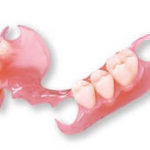 Partial Dentures
Partial Dentures When one loses many teeth in the mouth, the facial appearance will change. Also, there are another health effect due to not chewing food properly. The partial denture is fake teeth that provide biting surfaces in the missing spaces of the mouth. One must remove the partial denture and clean it every night in order to prevent gum inflammation.
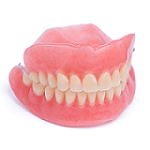 Complete Dentures
Complete Dentures The denture is a removable teeth replacement. When a patient had all his teeth removed, a complete denture provides a replacement for these missing teeth. Denture helps a patient to chew the food and let the patient pronounce sound properly when communicating with others. It is always recommending to clean your denture and your gum every day.
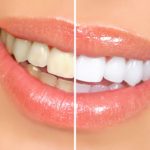
Teeth whitening is a procedure used to get rid of the external strains on the tooth surface. The faster way to whiten your teeth is the in-office teeth whitening procedure. The professional whitening material has a higher concentration of hydrogen peroxide gel. The whitening gel is applied on the tooth surfaces in 3 sessions of 15 minutes interval. During the whitening process, the patient gum is protected with a gel to prevent any sensitivity. A led laser light is shining on the teeth to activate the whitening gel. After the whitening session, the patient may feel some sensitivity even though every precaution is taken to reduce this sensitivity effect.
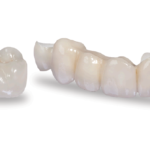 Zirconia Crowns
Zirconia Crowns Zirconia is a material that is very strong and commonly uses nowadays for the crown. The traditional crown is made of porcelain and metal together. Over times, the metal material will show at the gum margin. The advantage of zirconia crown is that it is white in color so there is no metal showing at the gum line.
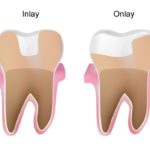 Onlay / Inlay Crowns
Onlay / Inlay Crowns The Inlay and Onlay procedure is a conservative approach in restoring the tooth structure because it is only preparing a portion of a tooth structure. Inlay is a partial crown to cover the inside of a tooth. One requires inlay because the tooth has a defect or cavity on the inside. Inlay builds back the tooth structure and it is a less invasive procedure than a crown. Onlay is also a partial crown but it covers the outside surface of a tooth.
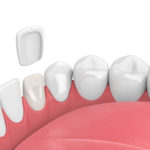
Veneer is a thin layer of porcelain that cover the front surface of a tooth. It is used to change the color of one’s tooth or the shape of the tooth. In addition, it can be used to remove any small spacing between the teeth. In general, veneer requires less reduction of a tooth surface and it primarily cemented on the front surface of a tooth. In order to create a beautiful smile, it requires 6 to 8 veneers based on one’s smile.
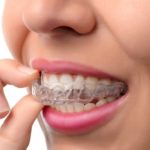 Night Guards
Night Guards Bruxism is a condition in which one grinds their teeth. This condition tends to occur at night when the patient is not aware of it. This will cause pain in the jaw or earaches when the patient wakes up in the morning. In order to prevent bruxism, a night guard is recommended. A night guard is a hard plastic material in which the patient wears when he/she goes to sleep. This night guard will relax the jaw muscle and prevent damage to the opposing teeth when teeth grinding is occurring. Since the night guard is made of plastic material, it will last for a few years and need to be remade when it is worn out.
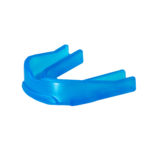 Mouth Guards
Mouth Guards The mouth guard is also known as a sports guard. It is made of plastic material and it is intending to protect one tooth and gum an injury occurring during any kind of contacting sport. A custom made mouth guard is done at a dental office in which an impression is taken of the upper arch to produce an exact fit of your teeth and gum.